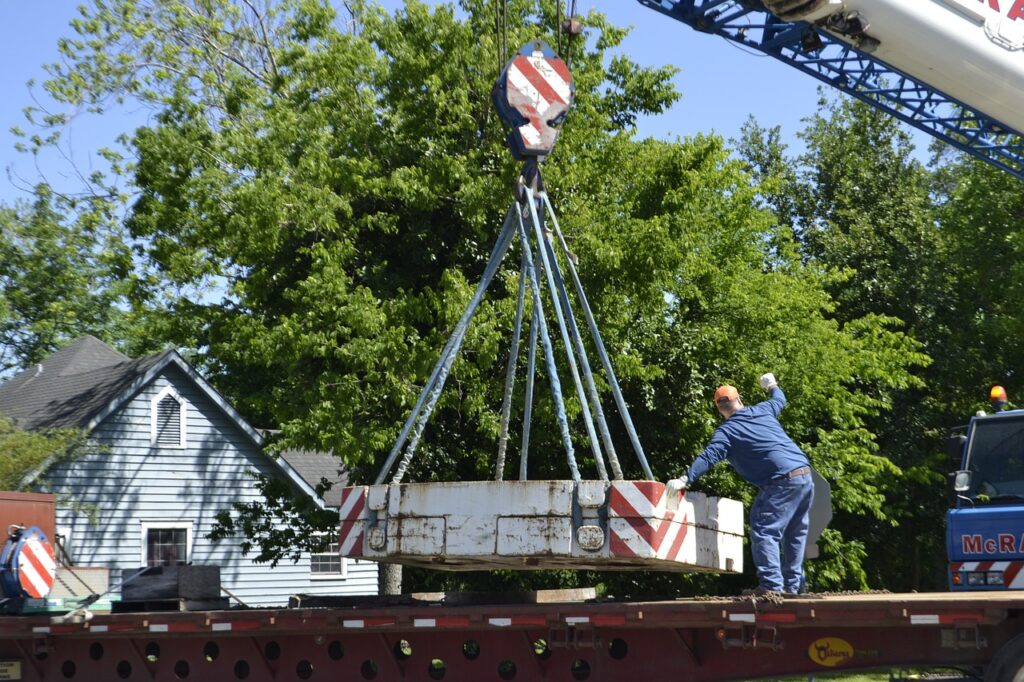Rigging Safety
 Rigging is a critical part of construction work. Rigging is used to lift heavy materials to heights with cranes and other devices. Improper rigging of a load or a rigging failure can expose riggers and other workers nearby to a variety of potential hazards.
Rigging is a critical part of construction work. Rigging is used to lift heavy materials to heights with cranes and other devices. Improper rigging of a load or a rigging failure can expose riggers and other workers nearby to a variety of potential hazards.
Annually about 50 riggers are killed when loads have slipped from the rigging or when the rigging has failed. To protect workers against accident, OSHA has a series of strict rigging requirements. These requirements call for maintaining rigging equipment, properly training employees, and more.
Rigging and slinging should be considered a system, each component (hook, shackle, cable or chain) making up the system. Riggers should take care when using rigging and slings. The rating of the shackles utilized should be equal to or greater than the rating of the slings. Each shackle and sling should be individually load-stamped and certified. Only shackles and sling hooks that are load rated by their manufacturer, with a rating appropriate for the load, should be used.
Each day before being used, all slings, fastenings, and attachments should be inspected for damage or defects. Damaged or defective slings should be removed from service. A system of periodic inspection should be established to assure that any deformation or elongation in the shackles and sling hooks does not exceed the manufacturers’ recommendations.
The Functions of Rigging are to Move and Support Material

When rigging loads, employees must be able to recognize hazardous conditions, such as:
- Improper sling or attachments for the type of load to be lifted and the environment in which it is being lifted;
- Worn slings and attachments, or those with damage such as cracks, kinks, bends, cuts, gouges, and frayed fibers; and
- Improper storage of slings and misuses such as resting of loads on the sling or dragging of slings across abrasive floors.
Employees need to identify and avoid hazardous work practices, such as:
- Riding slings or walking under suspended loads.
- Using improperly repaired or reconditioned slings and attachments, or slings and attachments that must be removed from service.
Inspection of Rigging:
Inspections of slings and related rigging hardware are to be done before each use. Any sling that is found unfit for use shall be “red tagged” and returned to the shop.
 Some of the things to look for when inspecting slings:
Some of the things to look for when inspecting slings:
- Missing or illegible sling identification
- Melting or charring on any part of the sling
- Holes, tears, cuts, snags, or elongation of the sling
- Broken or worn stitching in load-bearing splices
- Excessive abrasive wear
- Knots in any part of the sling
- Excessive pitting or corrosion, or cracked, distorted or broken fitting
- Distortion of chain links
- Visible indications that cause doubt as to the strength of the sling, such as loss of color that may indicate the potential for ultraviolet light damage; and Distortion, kinking, bird caging, or other evidence of damage to the wire rope structure.
Wire rope slings shall not be used if, (10) randomly distributed broken wires in (1) rope lay, or (5) broken wires in (1) strand in (1) rope lay.
Safety Tips while Rigging:

- Never tie two or more slings together
- Always connect two slings with an appropriate sized shackle
- Never attach a sling directly to a lifting lug. Always use a shackle
- Never run a sling through a set of lifting lugs or eyebolts. Doing so creates too much tension on the eyebolts or lugs
- Always choke below the threads on a flat synthetic sling
- Always use the right size shackle for the job. For example, a 1 inch shackle is
too small to use with a 1 ½ inch wire rope sling. However, a 2 inch shackle
works safely with a 1 ½ inch wire rope sling - Never orient two slings in a shackle so that they would pull the shackle in
opposite directions that are parallel to the shackle pin.
This content has been provided by Trident Safety Co. They offer both onsite, and classroom training for a wide variety of OSHA and construction safety topics. Stay Safe and Contact Trident Safety 732-801-5598
